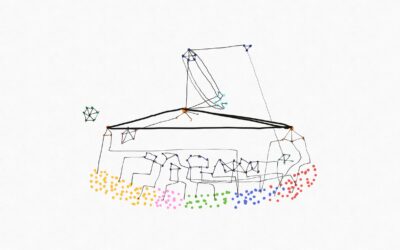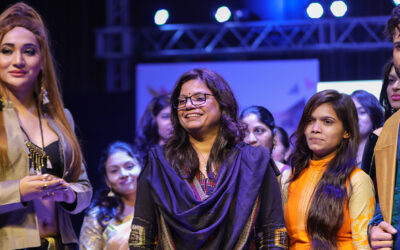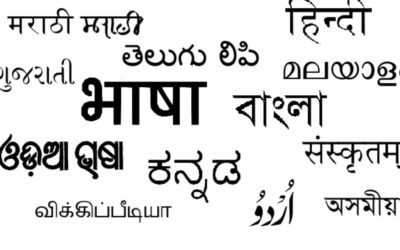‘Whenever you find yourself on the side of the majority, it is time to pause and reflect’ ~ Mark Twain
The build up to the 2019 national elections, at least if you follow the news, was quite chaotic, although predictable. Some of the actors may have changed, but the drama was the same: politicians mudslinging each other, actors and sports persons jumping into the fray, symbolic battles between the Aam Aadmi and some political bigwigs (read Tej Bahadur and Narendra Modi in Varanasi). All the ingredients were there for the perfect storm in a teacup that is the Indian elections.
In all this brouhaha, a thread was unearthed that only resurfaces every time; an issue that only a few people in the mainstream media (excluding websites such as The Wire, Scroll and Caravan) tend to cover in the non-election season. While the so-called ‘vote-bank politics’ and a thinly disguised hatred for minorities have characterised the campaigns of two major national parties for decades now, these minorities never quite occupy the political spotlight as in this election. The change in the political rhetoric in the last five years has emboldened several sections of our society to mob lynch minorities, espouse violence against them or otherwise discriminate against them. The rise in communally motivated incidents of violence has been noted both in the media and in civil society, but little has been done politically to discourage or prevent these acts of violence. We already know all this, thanks to the efforts of a few courageous news organisations, activists and critics of the regime.
But how exactly does the question of difference play out on the ground? At a fundamental level, the hatred and contempt that parties like BJP spew for Muslims, and other religious minorities is a visceral reaction to the fact of difference that these communities embody. They differ in cultural and religious practices from the mainstream Hindu identity, which is slowly being conflated with the idea of the nation itself. The use of Bharat over Hindustan (an Arabic-origin word) and the change of ‘Muslim’ names of cities like Allahabad to ‘Hindu’ names like Prayagraj, are a few of the many acts that belie this process. This narrative is largely familiar to anyone who follows Indian history and politics. Another aspect of this issue that cannot be ignored is that most communal riots and disturbances since Independence have taken place in cities [1].
In cosmopolitan areas, the fear of the outsider (read migrant), the interactions between different communities and the scope for anonymity that urban life brings make for a deadly cocktail that has set off several communal riots in the past.
A city is a polarised space, and the tension is always simmering between the majority and the minority. Having been raised in a city, this has been my understanding of religious or cultural difference, as far back as I can remember. In cities, there are certainly also spaces where people from different communities live in harmony. However, these are situations where people live in peace despite the identity politics and entrenched communal narratives that surround them. Thus, the foregrounding of the city, by political analysts and socialists, as the site for communal violence and polarisation, has led to the sidelining of the question of the minority in small town and rural India. Before coming to Mhaswad, I too had barely given any thought to this.
In small towns like Mhaswad, the presence of minorities is itself something that the casual observer might miss altogether. According to the Census 2011 data, minorities account for only 8.5% of the population here. Out of these, Muslims account for 4.18% closely followed by Buddhists and Jains at 2.19% and 1.87% of the population respectively. It’s not just the presence of minorities, but the everyday cohabiting of spaces by members of different communities, that is less common in rural areas. In Mhaswad, there are clearly demarcated living areas for different religious and cultural groups. People from the same caste or community live in the same gully (street).
The house I live in, for example, is in Sangar gully, where most families from the Sangar caste live. In such a scenario, difference is tolerated, as long as it exists within these well-defined boundaries.
However, to actually break down how the difference is actually understood and rationalised, even within a small town like Mhaswad, would take months and years of research. What I can offer, instead, are a series of my observations and reflections on the lived reality of minorities here, and the attitude of those in majority, towards them. So far, among minorities, I have only had the opportunity to interact with Muslims and Christians. Every community has a different history of their arrival in Mhaswad. The Muslim community is probably the oldest here. From the early 15th century to the early 16th century, Mhaswad had been a part of the Bahamani Sultanate. Later, after the Sultanate broke up into five smaller kingdoms, it was a part of Bijapur state ruled by the Adilshahi dynasty. The origins of the Muslim community can be traced at least as far back as this period. But more than the actual history of Islamic rule in the Deccan, the perception of selectively remembered historical events is what intrigued me.
The Hindutva narrative remembers Muslim rule as a dark period when temples were destroyed and their material was used to build mosques. The government website for Satara also presents the history of the district in a similar fashion, devoting one line to the period of Islamic rule, while waxing eloquent on the ‘Golden Era’ of Shivaji. When I asked a neighbor (a Hindu) about a weathered structure in Mhaswad that I would see every day on the way to work, he told me it was built by Muslims and that they had used the bricks of a temple raided by them. There was no sense of anguish for historical wrongs in his voice but he did tell me with pride that one could still see identifying characteristics on the bricks of their Hindu lineage. On the other hand, a Muslim I spoke to remembered fond memories of the structure as a place where Ramzan prayers are offered.

Where Ramzan prayers are held
Another way in which minorities are marginalised is the occupation of public spaces by the majority community. I cannot count the number of rallies, public events and processions that I have witnessed for Hindu religious events such as Ganesh Chaturthi, Shiv Jayanti and other occasions. Shiv Jayanti facilitates a double exclusion of minority communities, from the cultural as well as political life of Mhaswad. The recent one was organised by Shiv Sena, as in other parts of Maharashtra. While I certainly enjoyed the Miraunak (dholak processions, dances and street plays that took place throughout Mhaswad), I couldn’t help but notice the way in which Muslims were demonised in the street play on Shivaji’s life. While the historical figure of Shivaji was certainly more amenable towards Muslims as he employed them in his army and his fight was more political than religious, he is portrayed as an icon of Hindutva might against non-Maratha (read Islamic) forces. I wondered how comfortable the Muslims of Mhaswad felt about these public displays, and if any of them were even present in the sizeable crowd on that day. In contrast, during all my time here, I have seen only one overtly Islamic rally being organised.
As for the Christian community, they are even less visible to an outsider. The major presence is that of a convent school, Mount Mary.* While there are competing claims as to the quality of the education they provide, I have heard many people attribute rather sinister motives of evangelisation to the Keralite fathers and nuns who run the school. Their policy of allowing only English to be spoken in the school, while certainly debatable, is often construed as part of a Christian plot to destroy our Indian sanskriti (culture).
No doubt the growing influence of BJP’s ideology in these areas have led to such ideas. As for my own interaction with the Christian community, it has been limited to one family. As a loyal customer of Sarita* bakery, I happened to interact with their owners, a Christian couple with two young boys (who attend Mount Mary, no surprises there!). Only the mother of the boys has roots in Mhaswad, while the father is from Kerala. There is another similar family here, who own a bakery as well, but that’s where my information about this community ends.
I sometimes wonder if it is my own urban lens that makes me see these issues in the light of marginalisation and exclusion but when I observe the dynamics in Mhaswad, I am unable to see a different narrative.
Even Muslim and Christian owned shops and businesses are given Hindu names, presumably to erase the fact of difference. Except for meat shops, where having Muslim names is not a taboo, (since most butchers follow Islam or are outsiders), there are barely any shops in Mhaswad with non-Hindu names. Despite these issues, several minorities also seem to live in harmony with the majority community. There are Muslims who take part in Hindu rituals and vice-versa. In one of my earlier blogs, I had mentioned a puja pandal where both the religions organised the Ganesh Chaturthi festival. One question that continues to bother me is why the onus for maintaining this communal harmony is always on the minority community. It is always for them to conform to the image of a ‘Good Muslim or Christian’; taking part in mainstream cultural rituals and taking pains to mitigate their divergence from the group.
While the national political discourse takes on more and more of a saffron hue, its polarising effects have spread beyond cities to small towns and rural areas. The Muzaffarnagar riots of 2013 is one of the worst examples of this phenomenon. In Maharashtra itself, the towns of Harsul and Pachora saw communal incidents in 2015. All this reminds me of the stories my grandmother would tell me about how the partition tore through communities in East Pakistan. Their Muslim neighbors had helped them escape to India, but not all families made it. My grandmother blames political leaders for creating enough communal tension to turn friends and neighbors against one another. It seems little has changed since then.
*Names changed to protect identity
** One refreshing and beautiful example of communal harmony that I had the privilege of witnessing recently was the Eid celebrations in Mhaswad. Here, Hindu families were invited by their Muslim neighbours to partake of the Eid festivities. Hindu families would go to Muslim houses and savour the delicious Eid delicacy of sheer khurma (a sweet dish made of milk, ghee, dry fruits and semolina). While such customs may not completely eradicate the poltergeist of prejudice, they are certainly heartwarming reminders that communal harmony and acceptance of other communities are not as elusive as they may seem.




What an insightful and painfully depressing account of marginalisation of religious minorities even in a small town like the one where you are living roshni. Your writing is so courageous and your style so eloquent. I love the way you have mixed your personal observations with history and political events. Keep blogging from the field. I am reading your work with so much interest and pride here in London! Moupishi
Thank you so much Mou Pishi! My perspective of this issue in Mhaswad is constantly evolving and I hope to write a longer piece on it. Your thoughts and encouragement are much appreciated 🙂
A very interesting read
Thank you